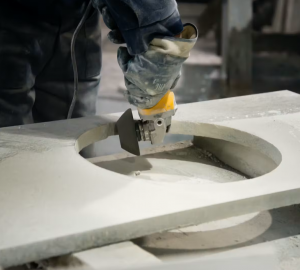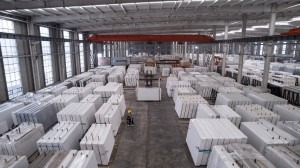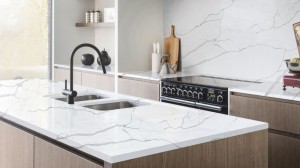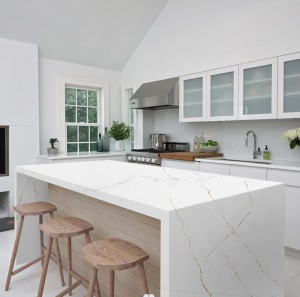Quartzite is a type of quartz-based stone that is becoming increasingly popular in interior design. However, there are two main types of quartzite: natural and engineered. In this article, we will explore the differences between natural quartzite and engineered quartz.
Natural Quartzite
Natural quartzite is a naturally occurring, metamorphic rock that is formed through years of geological processes. It is typically mined from quarries and then processed to remove any impurities or imperfections. The resulting stone is a highly durable and dense material with a unique appearance. Natural quartzite is often used in flooring, countertops, and other high-traffic areas due to its resistance to wear and tear.
Natural quartzite has formed in locations all around the planet and the most well-known quartzite quarries are in Brazil. Quartzite is also quarried in the United States, Sweden, Canada, Norway, India, and Italy, among other locales.
Engineered Quartz
Engineered quartz, also known as manufactured quartz, is a man-made product It is typically made from crushed quartz particles that are then bound together with a resin or polymer matrix. Engineered quartz can be produced in a wide range of colors and finishes to match various design styles. It is also less expensive and more easily available than natural quartzite.
Manufactured quartz is made in factories in the United States, Europe, and Asia, among other locations.
Differences in Appearance
Natural quartzite has a more pronounced and variable appearance compared to engineered quartz. It often has a more irregular texture, with visible mineralogical features such as garnet, mica, or schistosity. On the other hand, engineered quartz has a more consistent and uniform appearance, with a smoother and more even texture.
Differences in Durability and Resistance
Natural quartzite is highly durable and resistant to wear and tear, making it suitable for high-traffic areas such as flooring and countertops. However, its resistance to stains and chemicals may vary depending on the mineralogical composition of the stone. Engineered quartz is also durable and resistant to wear and tear, but it may not be as resistant to stains as natural quartzite. However, it can be easily maintained and cleaned with regular cleaning agents.
Quartz is made in a mold.
Many quartz brands are made with the patented Breton process, which involves pouring the ingredients in slab-shaped molds, then subjecting the mixture to a vacuum, vibration, and pressure. In the words of the manufacturer, it’s called “compaction by vibrocompression vacuum process.” The Breton process compresses slabs at around 30 pounds per square inch, and applies heat up to 360° F for around 40 minutes (in metric, that’s 180° C and 0.2 MPa). For comparison, that’s about the same amount of pressure in a car tire, and the same temperature and duration as if baking a casserole. Then the slabs are cured in a kiln, cooled, and polished. Compared to nature’s way of making stone, this is certainly quicker and more controlled, but the amount of heat and pressure used to manufacture a slab are far less than what happens in nature.
Natural quartzite is at home in many applications, from countertops and flooring, to outdoor kitchens and cladding. Harsh weather and UV light won’t affect the stone.
Engineered stone is best left indoors.
As I learned when I left several quartz slabs outside for a few months, the resins in engineered stone will turn yellow in the sunlight.
Cost and Availability
Natural quartzite is generally more expensive and less available than engineered quartz. Its mining and processing require more time and resources, which increases the cost. On the other hand, engineered quartz is less expensive and more widely available, as it can be produced in large quantities at a relatively low cost.
Quartzite needs sealing.
The most common problem with quartzites is inadequate sealing – particularly along the edges and cut surfaces. As described above, some quartzites are porous and care must be taken to seal the stone. When in doubt, be sure to work with a fabricator who is experienced with the particular quartzite you are considering.
Engineered quartz should be protected from heat and not scrubbed too hard.
In a series of tests, major brands of engineered quartz stood up reasonably well to staining, but were damaged by scrubbing with abrasive cleaners or scouring pads. Exposure to hot, dirty cookware damaged some types of quartz, as was shown in a performance comparison of countertop materials.
In conclusion, natural quartzite and engineered quartz are both popular choices for interior design projects due to their unique appearance, durability, and resistance. However, their differences in appearance, durability, resistance, cost, and availability should be considered when selecting the best option for your project.
Post time: Nov-23-2023






